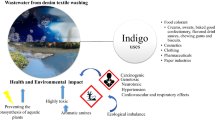Abstract.
C 2 to C 4 chloroalkanes have been used for a wide range of industrial applications. Consequently, numerous leaks to the environment have occurred. It is generally observed that the lower chlorinated members of the group, containing 1–3 chlorine atoms, accumulate in environments where reductive conditions prevail. Their half-lives under these conditions often exceed several decades. To date, successes in rapid and complete in situ reductive dechlorination have only been obtained with tetrachloroethene (PCE) and trichloroethene (TCE), but not with chloroalkanes. Since the key-player PCE- and TCE-dechlorinating bacteria involved have been studied, these organisms could be used as very efficient tools for low-cost in situ bioremediation. Except for one 1,2-dichloroethane-dehalorespiring bacterium with limited application possibilities and a recent isolate which partly dechlorinates some polychloroethanes, all bacterial reductive conversions of C 2 to C 4 chloroalkanes are based on slow, mostly incomplete and poorly controllable cometabolic dechlorinations. Furthermore, metals such as Fe(0) cannot dechlorinate most lower-chlorinated C 2 to C 4 alkanes. Hence, pump and treat, or aerobic degradation are the applied technologies, although they are expensive and time-intensive. However, energetic consideration of chloroalkane dechlorination suggests that metabolizing anaerobes may exist. Isolation and characterization of these organisms is warranted in order to develop cost-efficient, controlled, fast and complete in situ remediation technologies.
Similar content being viewed by others
Author information
Authors and Affiliations
Additional information
Electronic Publication
Rights and permissions
About this article
Cite this article
De Wildeman, .S., Verstraete, .W. The quest for microbial reductive dechlorination of C 2 to C 4 chloroalkanes is warranted. Appl Microbiol Biotechnol 61, 94–102 (2003). https://doi.org/10.1007/s00253-002-1174-6
Received:
Accepted:
Issue Date:
DOI: https://doi.org/10.1007/s00253-002-1174-6




